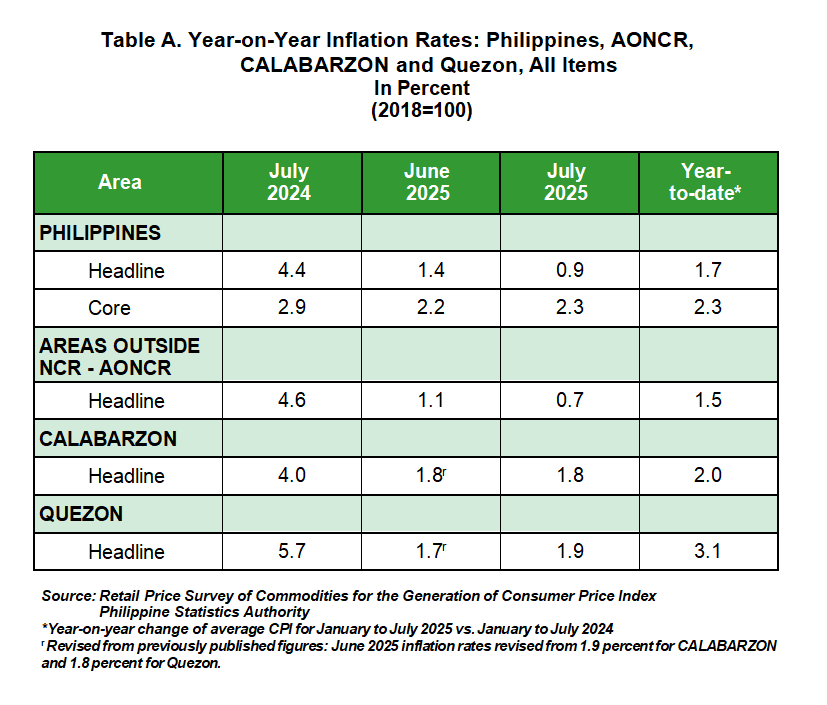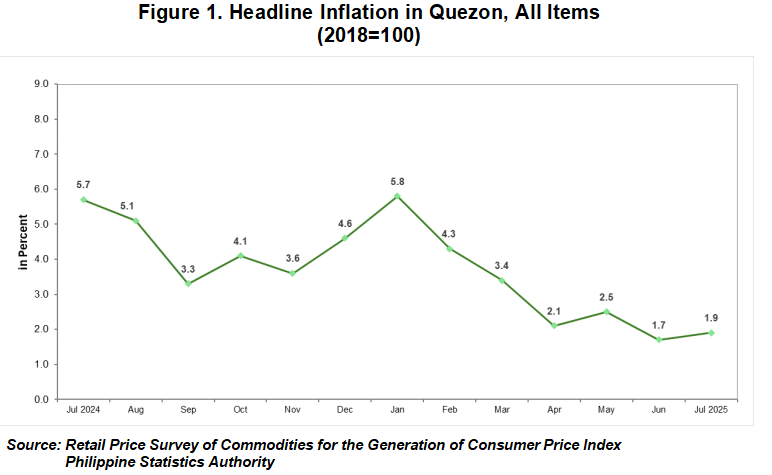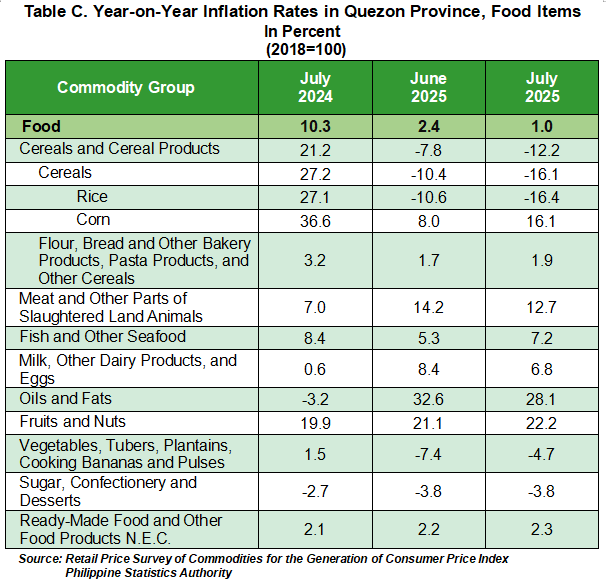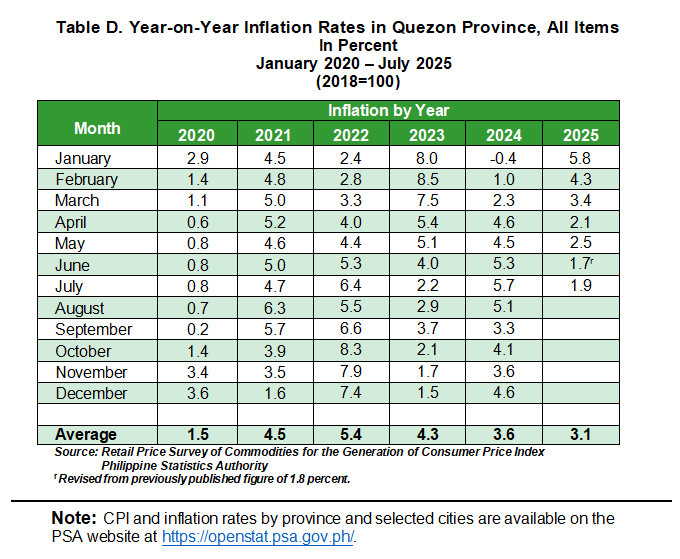

The headline inflation or overall inflation in Quezon province increased to 1.9 percent in July 2025, from 1.7 percent in June 2025. This brings the average inflation rate of the province from January to July 2025 to 3.1 percent. In July 2024, inflation rate was higher at 5.7 percent.
The increase in the overall inflation in July 2025 was mainly attributed to the faster annual increase in the index of housing, water, electricity, gas and other fuels which rose to 2.3 percent during the month from -0.8 percent in the previous month.
Moreover, the following commodity groups recorded higher inflation rates during the month, contributing to the uptrend in overall inflation:
a. Alcoholic beverages and tobacco at 7.5 percent, from 6.6 percent;
b. Clothing and footwear at 1.4 percent, from 1.2 percent;
c. Furnishings, household equipment and routine household maintenance at 2.6 percent, from 2.5 percent;
d. Health at 1.4 percent, from 1.3 percent;
e. Education services at 3.3 percent, from 0.1 percent;
f. Restaurants and accommodation services at 7.3 percent, from 6.3 percent; and
g. Personal care, and miscellaneous goods and services at 2.9 percent, from 2.6 percent.
On the other hand, the indices of the following group recorded lower inflation rates:
a. Food and non-alcoholic beverages at 1.1 percent, from 2.4 percent; and
b. Transport at -4.8 percent, from -3.7 percent.


Meanwhile, the following commodity groups retained their annual rates from the previous month:
a. Information and communication at 1.0 percent;
b. Recreation, sport and culture at 1.2 percent; and
c. Financial services at 0.0 percent.
Food inflation in Quezon province further decreased to 1.0 percent in July 2025, from 2.4 percent in June 2025. In July 2024, food inflation was significantly higher at 10.3 percent.
The slowdown in food inflation in July 2025 was primarily due to the lower year-on-year increase in the index of rice at -16.4 percent, a 5.8 percentage points decrease from last month’s -10.6 percent inflation.
Other commodity groups that contributed to the downtrend in food inflation during the month were the following:
a. Meat and other parts of slaughtered land animals at 12.7 percent, from 14.2 percent;
b. Milk, other dairy products and eggs at 6.8 percent, from 8.4 percent; and
c. Oils and fats at 28.1 percent, from 32.6 percent.
In contrast, higher annual growth rates were observed in the following food groups during the month:
a. Corn at 16.1 percent, from 8.0 percent;
b. Flour, bread and other bakery products, pasta products, and other cereals at 1.9 percent, from 1.7 percent;
c. Fish and other seafood at 7.2 percent, from 5.3 percent;
d. Fruits and nuts at 22.2 percent, from 21.1 percent;
e. Vegetables, tubers, plantains, cooking bananas and pulses at -4.7 percent, from -7.4 percent; and
f. Ready-made food and other food products not elsewhere classified at 2.3 percent, from 2.2 percent.
Meanwhile, the index of sugar, confectionery and desserts retained its previous month’s inflation of -3.8 percent.

(SGD.) AIRENE A. PUCYUTAN
Provincial Statistics Officer
PSA Quezon
NDP/SCNG
